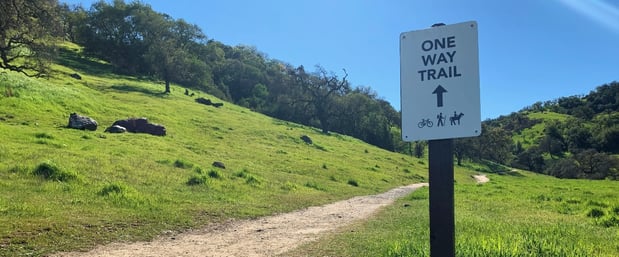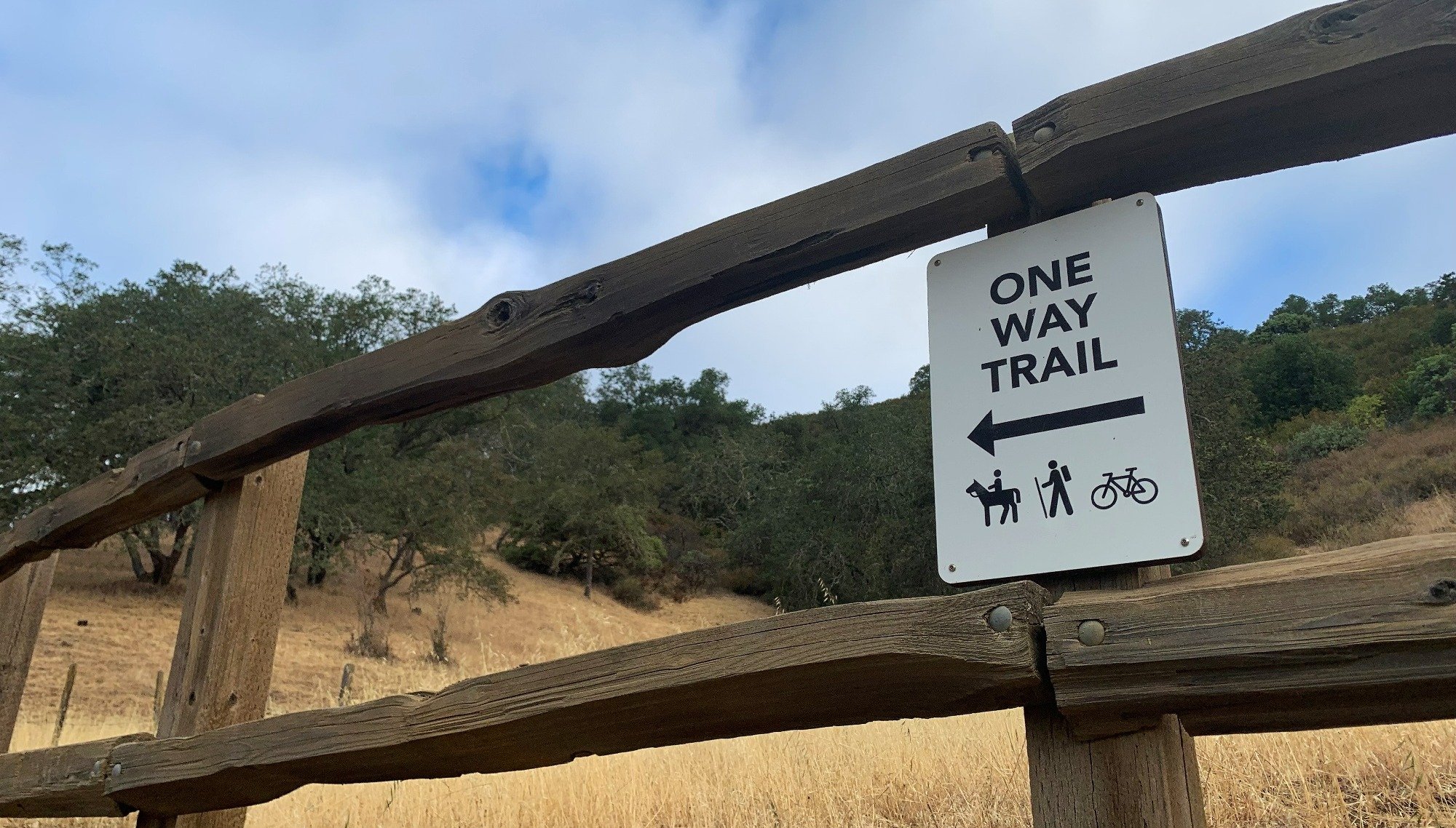In December 2021, the Open Space Authority launched a survey to gather public opinion about one-way (also known as directional) trails, inform their future at open space preserves, and ultimately evaluate how we can provide more meaningful, safe, and functional nature experiences for all. Currently, one-way directions are in effect on the Arrowhead Loop Trail (Coyote Valley) and Aquila Loop Trail (Sierra Vista).
The survey collected responses from December 2021 through June 2022. Staff gathered responses in-person at the open space preserves, through the Open Space Authority’s website and social media, as well as through traditional and ethnic media outreach. In that time, the survey received almost 800 responses.
Open Space Authority staff are thrilled to see responses from a range of trail users from all three preserves. Not only the “Big Three” – hikers, mountain bikers, and equestrians – but also photographers, geocachers, wheelchair users, birdwatchers, botanists, families with young children, and more.

Though we are still synthesizing all this insightful data, one question popped up again and again that we can answer right away:
Why have one-way trails at all?
Like many other trail agencies, the Open Space Authority initially began using directional trails in 2020 to minimize visitor interactions during the COVID-19 pandemic. With reduced head-on interactions the agency aimed to better support social distancing on the trails.
While science shows that the transmission of COVID-19 is less likely to occur outdoors, there are also some exciting benefits to one-way trails that led the Open Space Authority to extend their use while gathering visitor feedback.
Here are some of those benefits:
- Enhanced safety: With everyone traveling in one direction, there is a lowered likelihood of head-on collisions. Of course, being mindful of what’s behind you is recommended on any trail, so staying present (and not using earphones) is helpful.
- Fewer interruptions: Since 2020, many visitors have expressed that increased crowds at parks and preserves have been an uncomfortable adjustment. One question we now face is how to balance more and more people going outside and visiting the hidden open space gems and best-kept secret parks and trails. Passing fewer people can create more of a “wilderness experience” in open spaces, and an escape from the busy crowds and hyper-social lifestyle of the Bay Area. With reduced head-on interactions, your momentum through the trail can be continuous - providing a quieter and more personal experience, to enhance feelings of refuge and solitude. “I don't feel like we're getting covid even on crowded trails, but it is pleasant to pass fewer people,” said one respondent of the survey.
- Less impact on the land: Yielding to traffic coming from the opposite direction is the courteous and safe thing to do, but the simple action of stepping to the side of the trail can also result in negative impacts to the structure of the trail itself. With fewer people coming from the opposite direction, one-way trails reduce the amount of “yielding” that is needed, which reduces the unintentional widening of the trail.
Please check the Open Space Authority’s website for the direction of these trails, and to check preserve hours, conditions, and guidelines.
THANK YOU, FROM THE OPEN SPACE AUTHORITY!
We thank everyone who took the time to provide feedback about your experience on one-way trails. Your responses are essential as we continue our work to make open spaces more enjoyable and accessible places for everyone to connect with nature.
Updated 12/21/2023

